Set up your own Planetary Path!
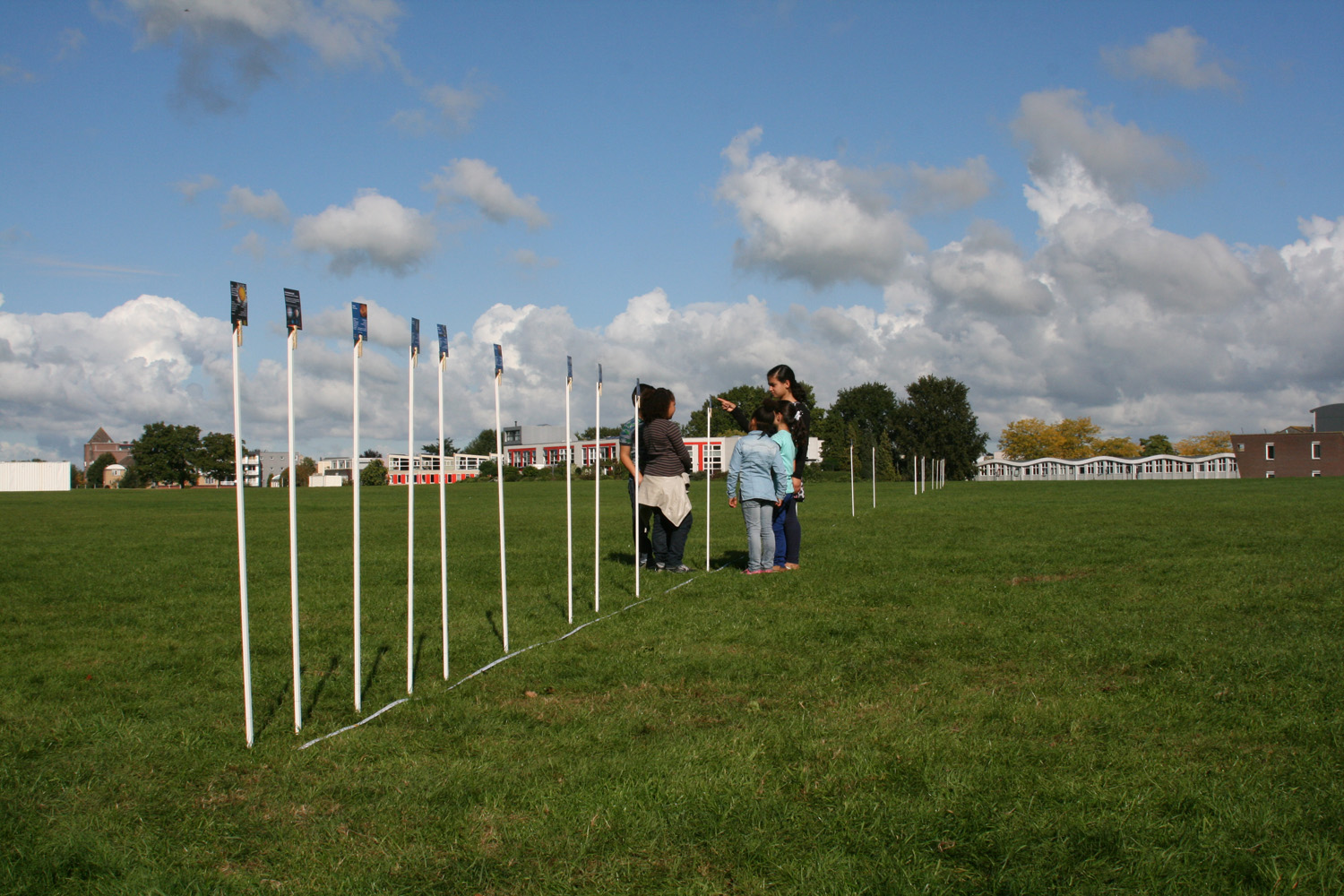
Our Solar System scale model is a unique scale model, made simply of cards (so low budget). Placed at the correct distances they perfectly illustrate the distances, sizes and the enormous size of the Solar System, the even greater distances to neighbouring stars and the emptiness of space.
Putting up the scale model is easy. You can hang them on walls, place them on the provided stands or use sticks (with glued on clothing peggs) that you put in the ground at the predistances (see picture on the right).
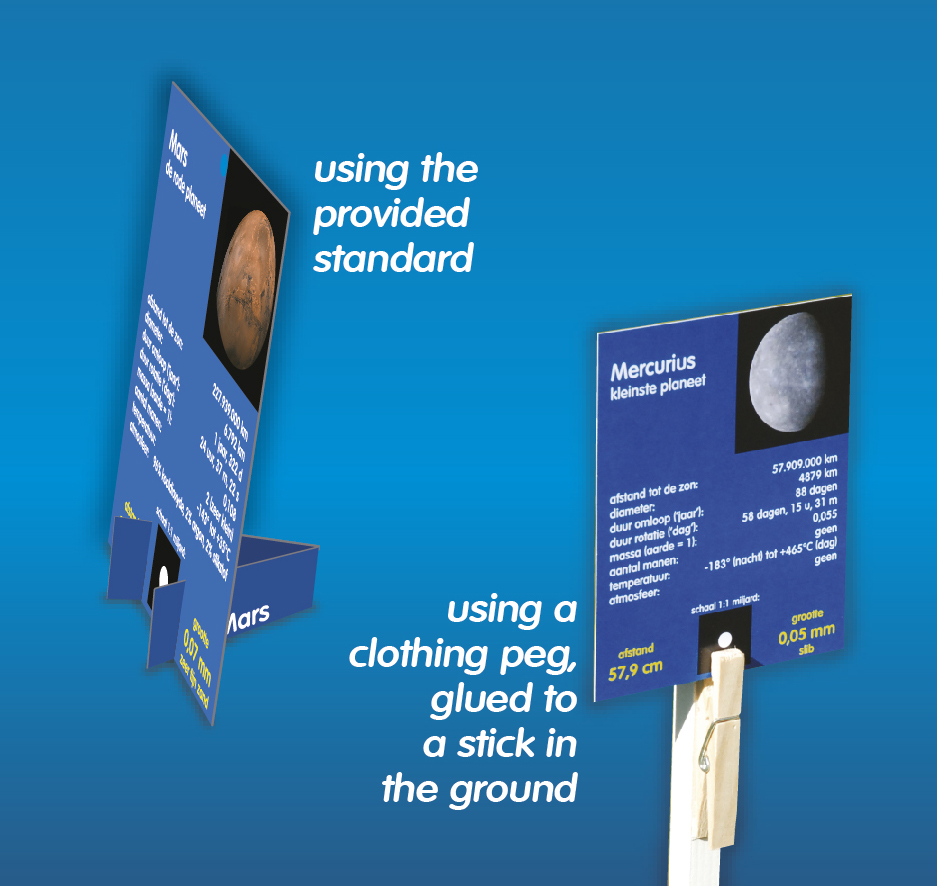
NEW: Two English sets of our Solar System scale model!
In 2020 a new English Solar System scale model will be released. There will be two sets: the Basic Set, consisting of 32 cards, and the Supplement of 24 cards. Here are the front and back pages, and the overviews of the cards.
Basic Set (32 cards):
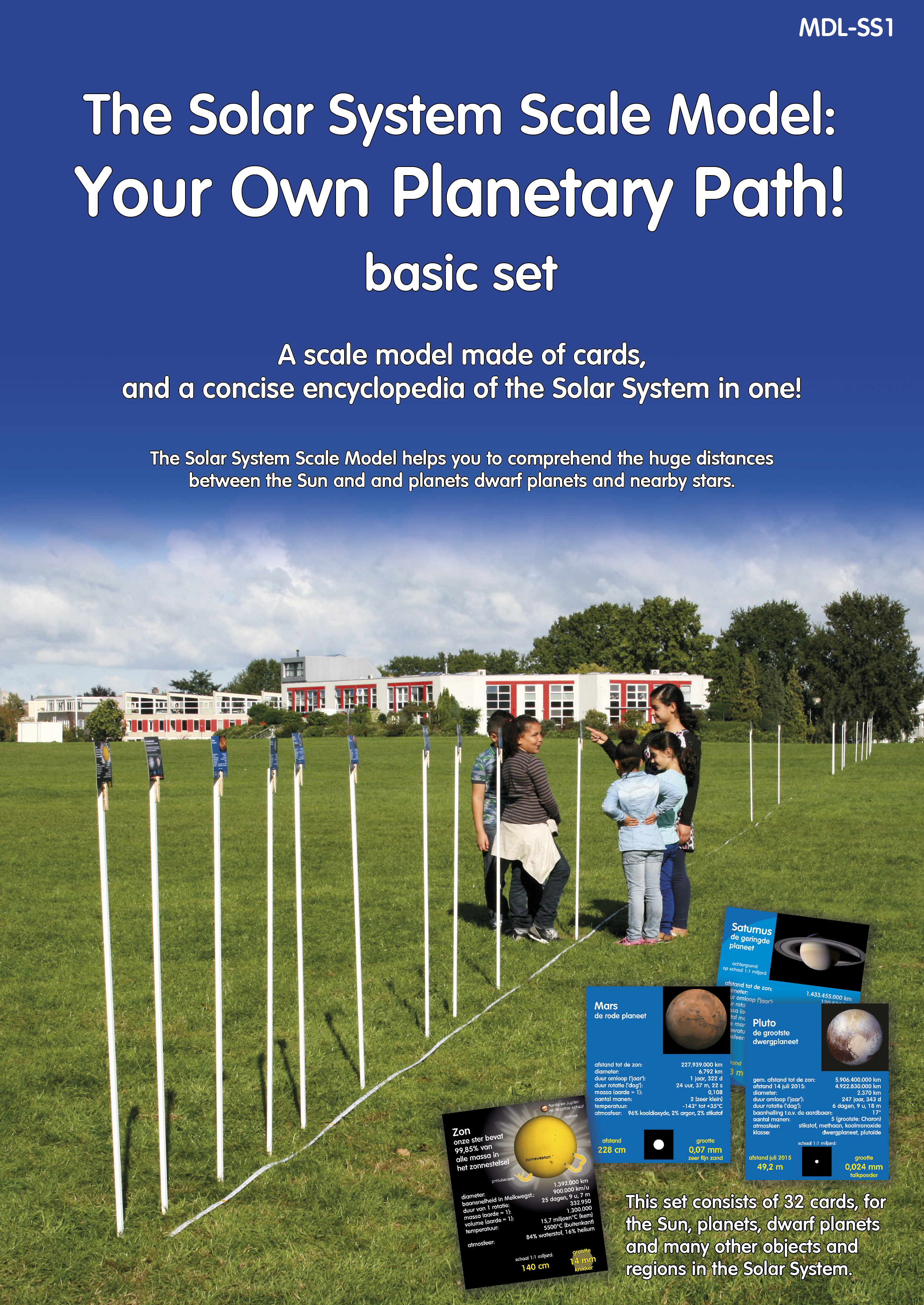
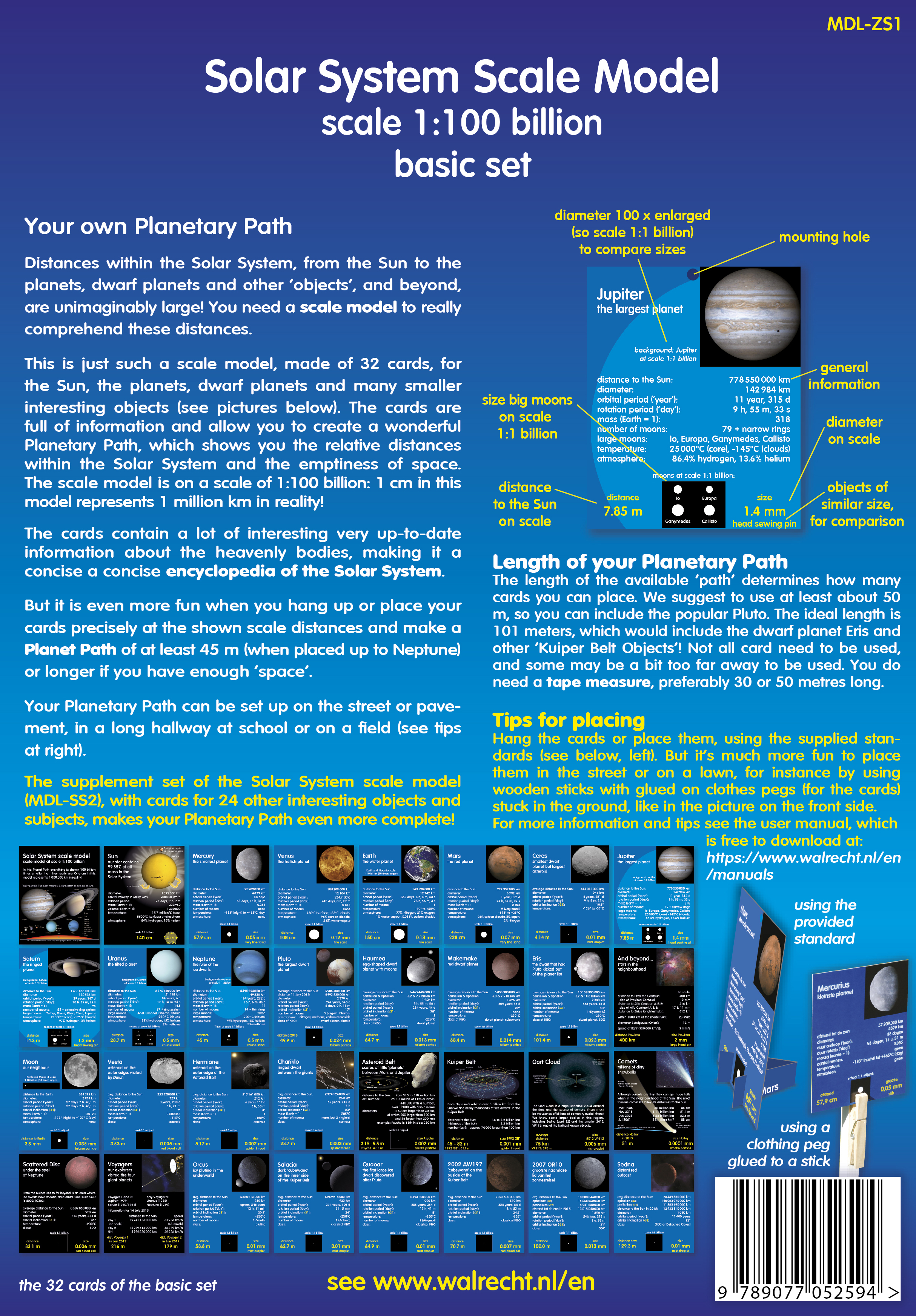
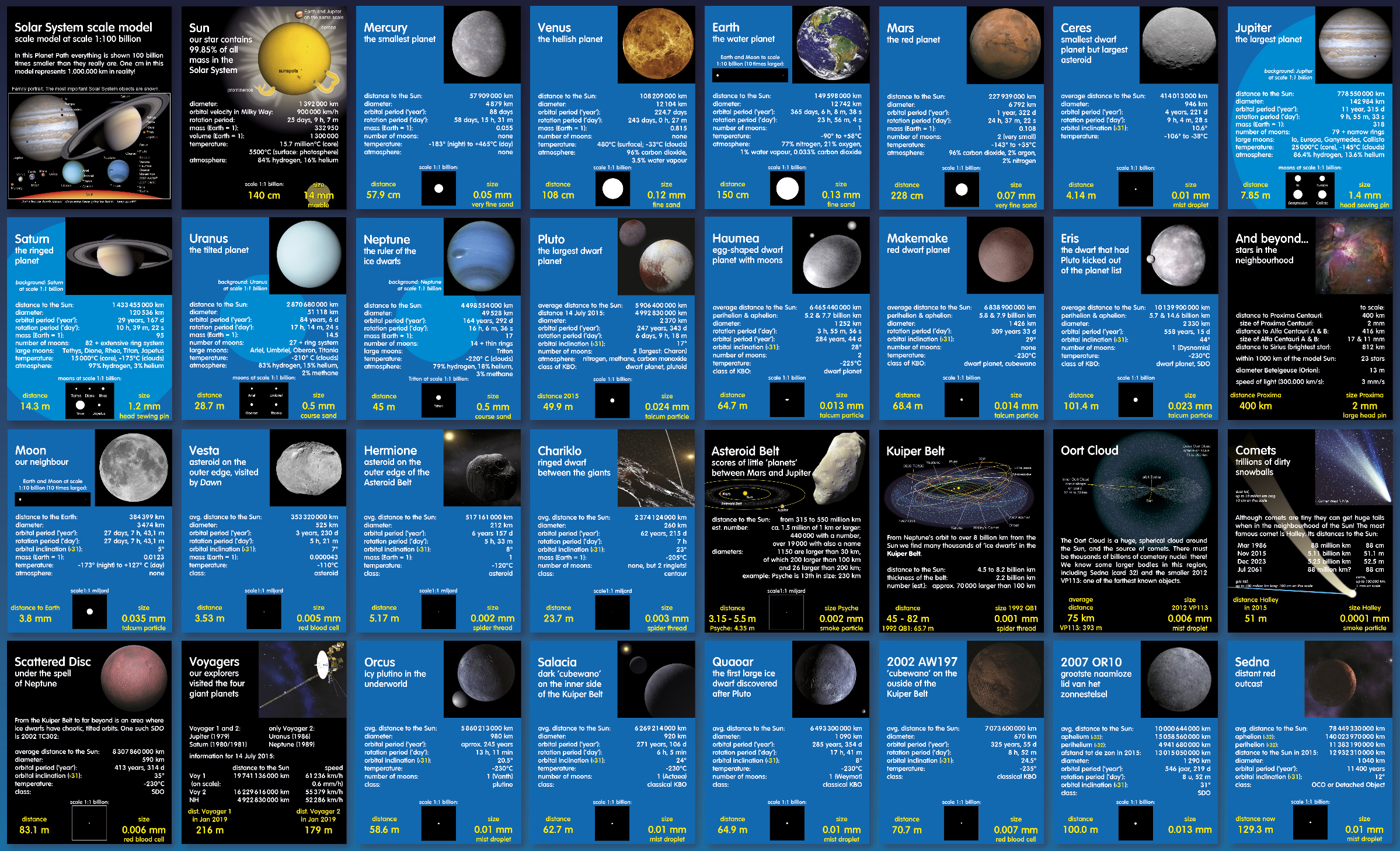
Supplement (24 cards):
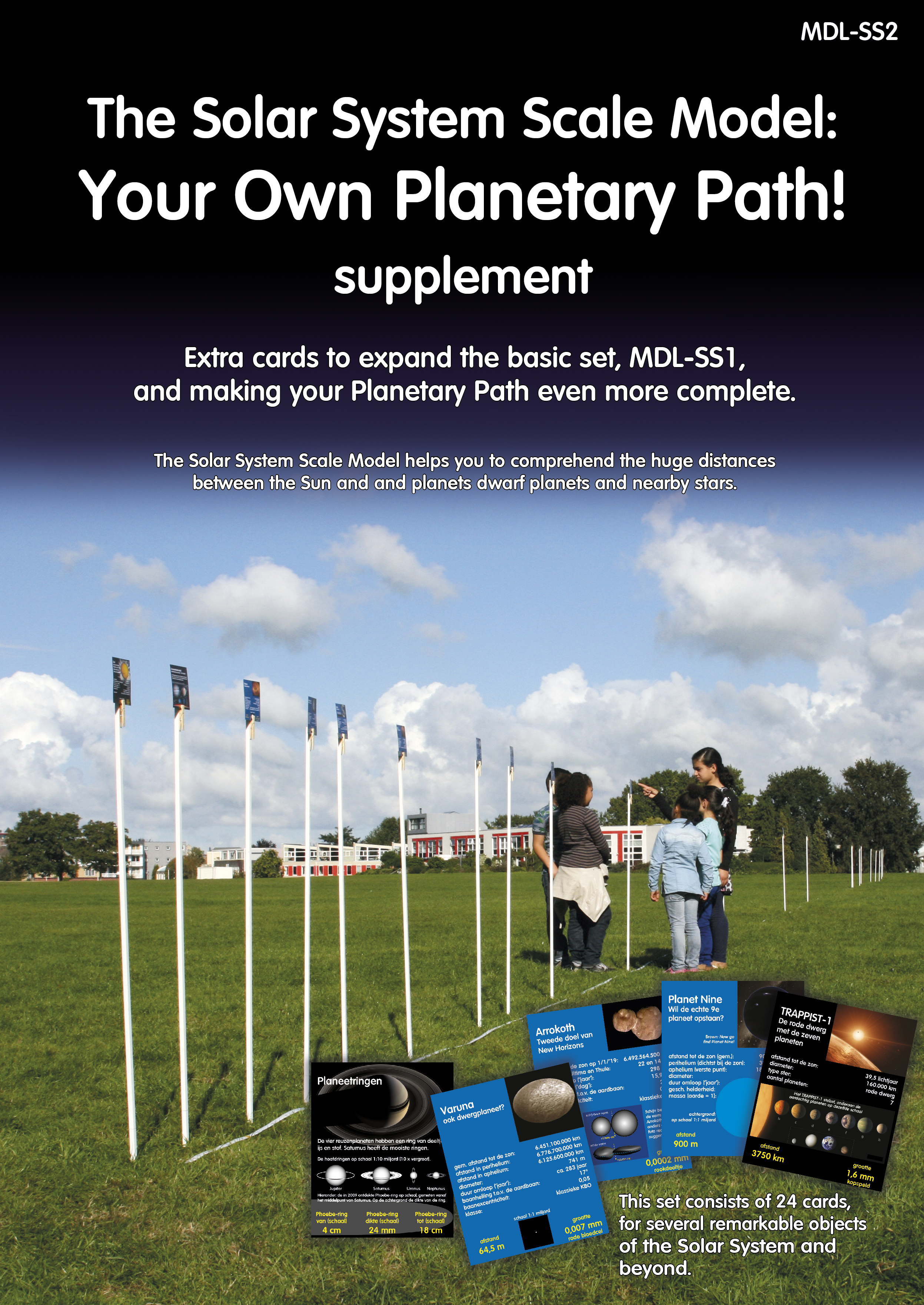
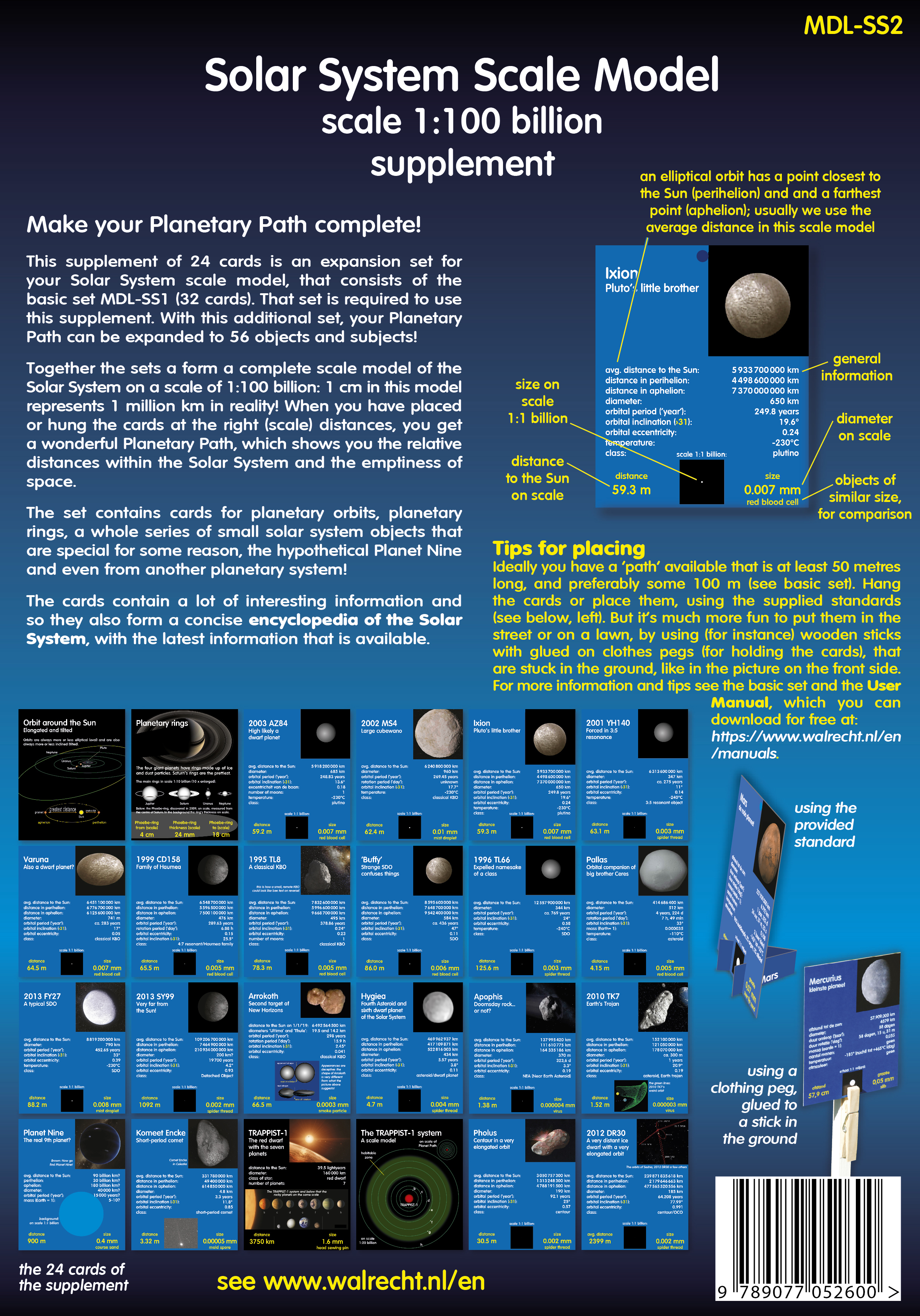
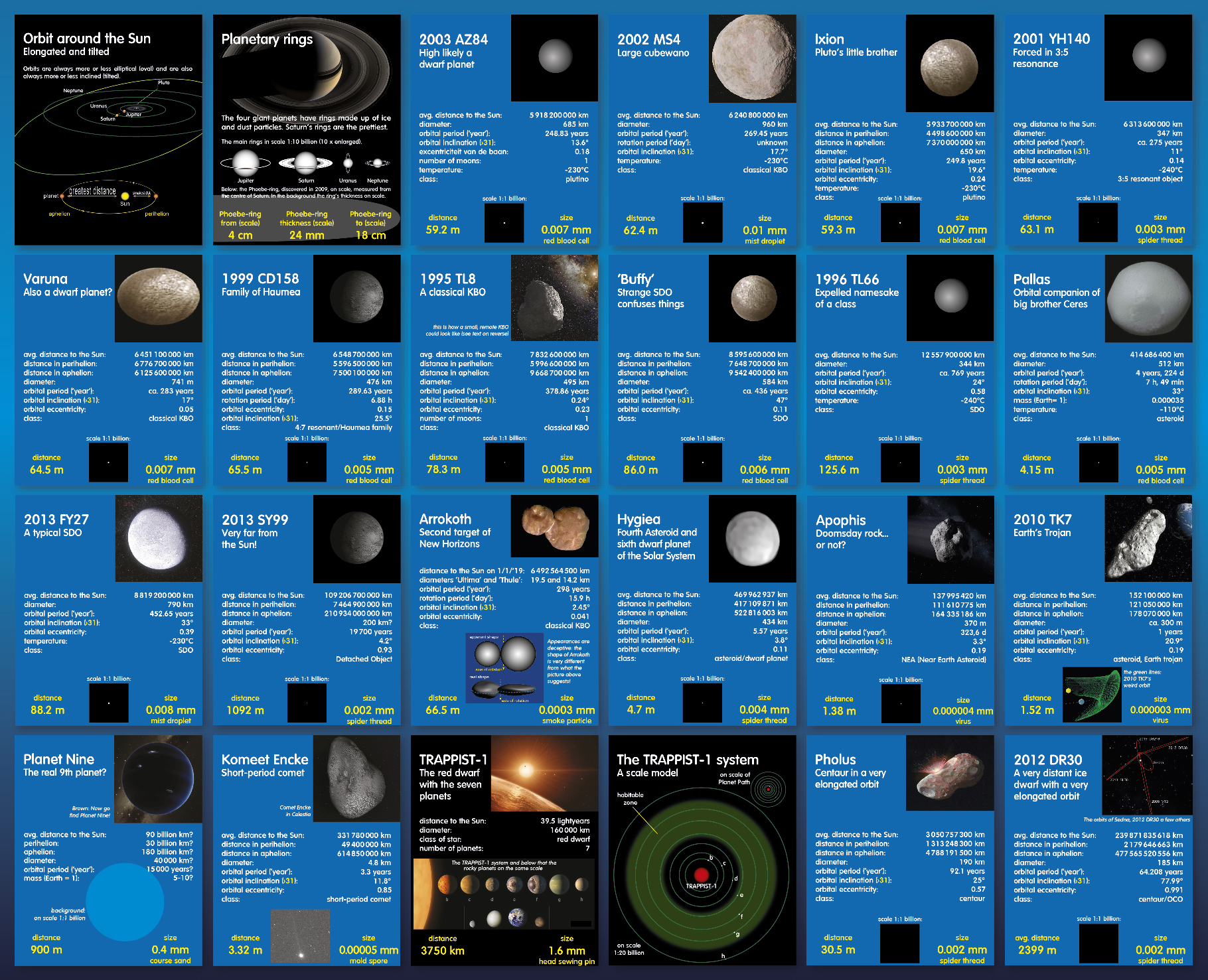
Explanation of cards
The cards contain much information, general information on the front side, and a narrative of the other side. The yellow numbers on the back sides are part of the index system: the card with that number contains the explanation of the subject (in italics) in more detail. This allows the model to be a concise Encyclopeadia of the Solar System as well!
Left: the Solar System scale model in use. Simple wooden sticks were used, with pegs glued on top of them.
Centre: the front and back side of the Jupiter card.
Right: the explanation of the different pieces of information.
.jpg)
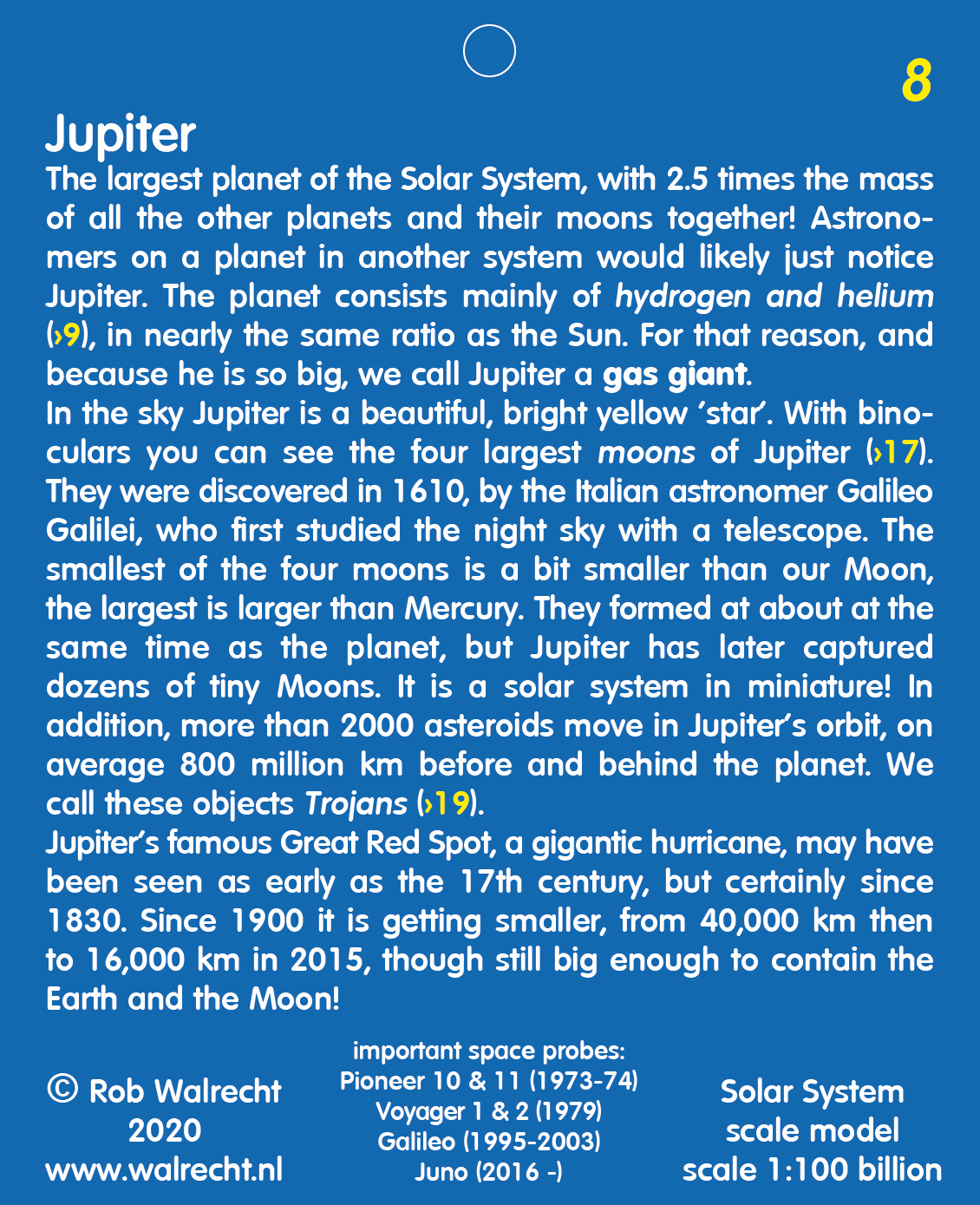
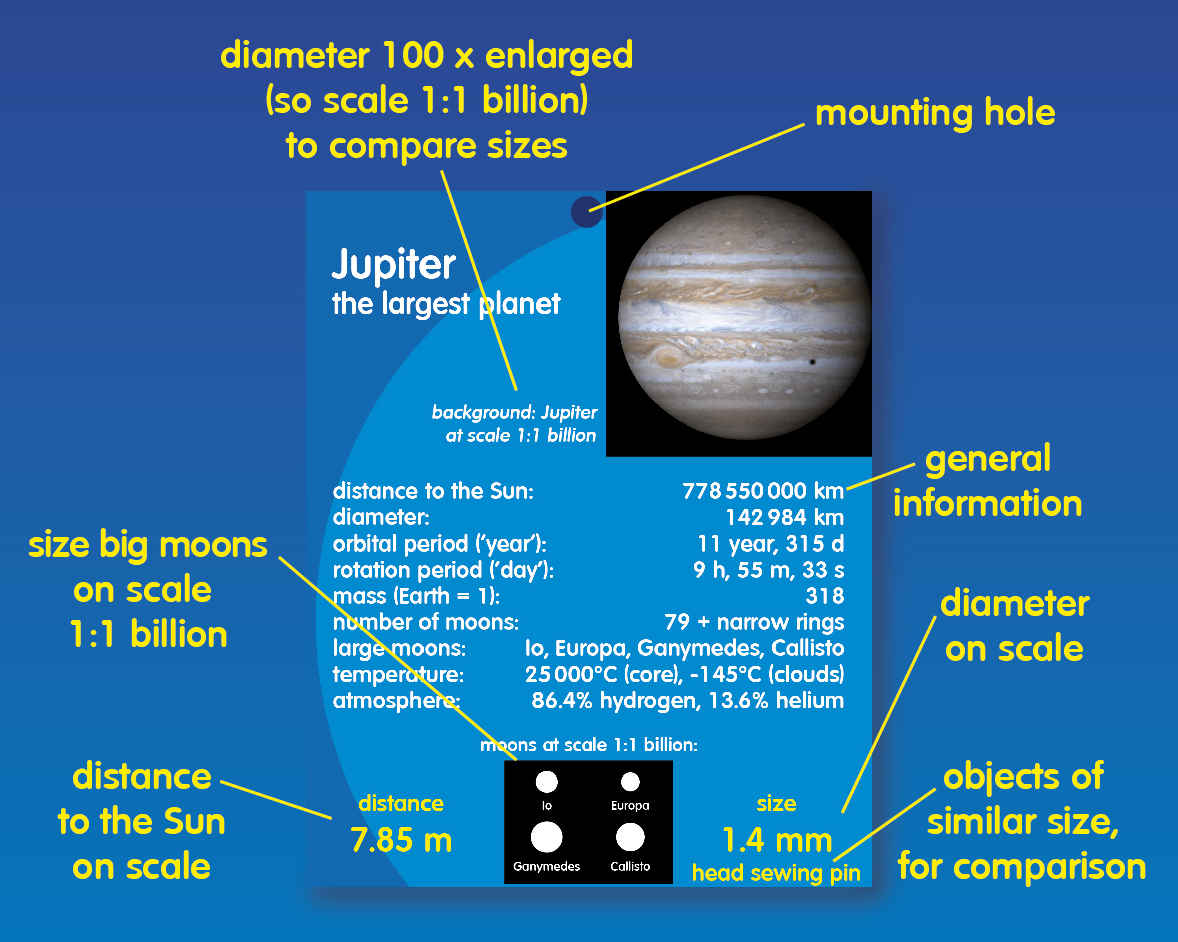
Subjects and objects of the Basic Set:
The Sun, the planets, the dwarf planets, 'And further...' (nearby stars), the Moon, several asteroids (Vesta and Hermione, to mark the inner and outer sides of the Asteroid Belt), the Asteroid Belt, Kuiper Belt, Oort Cloud, Scaterred Disc, centaur Chariklo, comets (Halley for information distance and size), the Voyagers 1 and 2, several ice dwarfs (plutino Orcus, cubewano's Salacia, Quaoar and AW197), Sedna and 2012 VP113.
Subjects and objects of Supplement:
Orbits around the Sun, Planetary rings; the Near Earth Objects (NEO’s) comet Encke, trojan 2012 TK7 and Near Earth Asteroid (NEA) Apophis; the asteroid and 6th dwarf planet Hygiea; the asteroid and possible dwarf planet Pallas; de classical KBO’s (‘cubewano’s’) 2002 MS4, Varuna and Arrokoth (‘Ultima Thule’); the plutino’s 2003 AZ84 and Ixion; the centaurs Pholus and 2012 DR30; thee resonant objects 2001 YH140 and 1999 CD158; the SDO’s 2004 XR190, 1996 TL66 and 2013 FY27; the detached objects 1995 TL8 and 2013 SY99; the hypothetical ninth planet of the Solar System (Planet Nine) and two cards for the TRAPPIST-1 system.

 Our Solar System scale model is a unique scale model, made simply of cards (so low budget). Placed at the correct distances they perfectly illustrate the distances, sizes and the enormous size of the Solar System, the even greater distances to neighbouring stars and the emptiness of space.
Our Solar System scale model is a unique scale model, made simply of cards (so low budget). Placed at the correct distances they perfectly illustrate the distances, sizes and the enormous size of the Solar System, the even greater distances to neighbouring stars and the emptiness of space.






.jpg)

